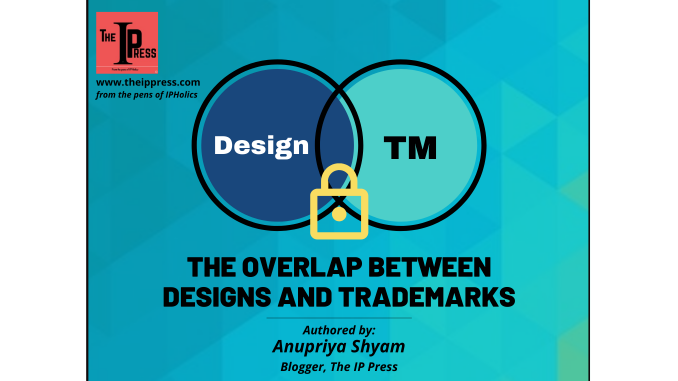
There are certain Intellectual Properties that are capable of being protected and enforced under more than one legal regime. In this situation, it becomes necessary to address and ascertain the extent of the overlap between the regimes. In this article, I will discuss the situation of an overlap between Trade mark and Design protection.
A Trade mark is a mark used in business which acts as a source identifier and distinguishes goods/services of one manufacturer from that of the other. Whereas a Design is any shape, configuration, pattern , colour combination, which is applied to an article to enhance the aesthetic value of that article. The main distinction between the two lies in the purpose that they solve. While the purpose fulfilled by a Trade mark is that of ‘identifying a source’; the purpose of a design is to enhance the visual appeal of an article and make it more aesthetically valuable.
The overlap between the two is created by their respective definitions under the law. A trade mark has been defined under Section 2(1)(z)b of the Trade Marks Act 1999, as :
“trade mark means a mark capable of being represented graphically and which is capable of distinguishing the goods or services of one person from those of others and may include shape of goods, their packaging and combination of colours;”
The Designs Act 2000 defines a design under section 2(1)(d) as :
“design means only the features of shape, configuration, pattern, ornament or composition of lines or colours applied to any article whether in two dimensional or three dimensional or in both….”
It is the latter part of the definition of Trade Marks which overlaps with the definition of Design.
Can Trade Marks be registered as Designs and vice versa?
This question has been clearly answered by Section 2(1)(d) of the Designs Act, which categorically excludes Trade Marks from the ambit of a design. Thus anything which is a Trade Mark under section 2(1)(zb), cannot be registered as a Design.
The situation regarding trade marks being registered as designs are very clear, but the vice versa situation of Designs being registered as Trade marks has not been clarified by the statues and has developed overtime by Judicial interpretations.
- Acquiring common law rights
Where any design capable of being registered under the Designs Act, as well as under the Trade marks Act, has been registered as a design, the statutory protection over the same will lapse after a period of maximum 15 years. However, there may be situations wherein an intellectual property initially registered as a design, has over the years acquired a secondary meaning and has started acting as a source identifier of the goods. For example, the unique design of the Coca Cola bottle has now become its Trademark and people associate the bottle directly with the brand Coca Cola. In this situation, apart from just protecting the design, it is also important to protect the same as a Trade Mark. For registered designs, the common law remedy for passing off is not available, however, the Delhi High Court in the case of Mohan Lal and Ors. V. Sona Paint & Hardware and Ors.[1] has held that where a Design starts functioning as a Trade Mark, then the common law remedy of ‘Passing off’ is available, provided the mark has attained secondary meaning. This action of passing off is maintainable during the subsistence of a design registration as well as post its expiry. A passing off action and an action for Design infringement can be taken in the same suit.
2. Acquiring Statutory Rights
The acquisition of common law rights has been adequately clarified by the court in Mohan Lal’s case, however the question of whether a Trademark registration could be obtained for a design, simultaneously while a Design registration exists is unclear.
Contrary to the Designs act which does not allow trade marks to be registered as designs, under the Trade Marks Act, there is no bar to filing a trade mark application for any design which has been registered under the Designs Act. However, although the filing of an application is not barred, there are high chances of it getting refused or challenged on the grounds of an existing Design registration on the same. This is so because a person cannot be allowed to claim the benefits of two different rights at the same time.
Thus, during the subsistence of a Design registration, a Trade mark registration cannot be obtained, however it can be obtained post the expiry of the Design registration in the event of the Design acquiring a secondary meaning of acting as a source identifier.
[1]AIR 2013 Del 143.

Leave a Reply